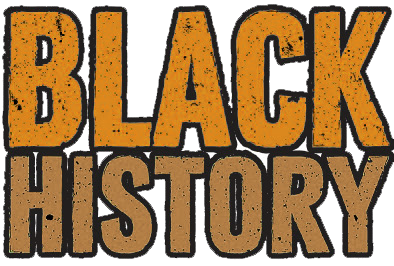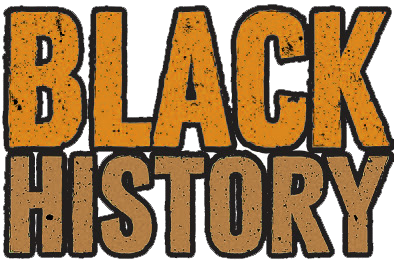The Truth About Black People and Country Music — We Created It!
The global success of rapper Lil Nas X's hip hop country song "Old Town Road" should not be a surprise to anyone. According to The True Origins of Country Music, a very powerful TED Talk by vocalist/ historian Queen Esther, not only is country music rooted in Black culture, but it also originated with blues music and West African music traditions.
When our African ancestors were violently uprooted from their homeland and enslaved by white colonizers, they saturated America with their slang and languages, their native plants, fruits and vegetables as well as traditional African dishes, their rural ways – and their music!
It took 400 years of the Middle Passage, work songs, field hollers, shouts, chants, arhoolies, spirituals, bloodshed and sorrow to create blues music. There is no question that this genre – with African musical traditions like call and response and the bluing of a note at its essence – is the DNA of American music. Without blues, there would be no rock and roll or any of its derivatives, like punk; and there would definitely be no country or bluegrass.
The banjo, a key instrument in country music, originated in Africa
Like blues music and all of its sonic offshoots that continue to flourish from its blood-soaked roots, the banjo is uniquely African-American. Originating in Africa, the banjo – also called banjar, bangie, banjer and banza – was created in the early 17th century by African captives and brought to America through the West Indies.
Thomas Jefferson was the first to mention the banjo in a footnote to his Notes on the State of Virginia, published in 1785: “The instrument proper to them [African captives] is the Banjar, which they brought hither from Africa...” It is nearly identical to the akonting of Senegal and Gambia, and played with the exact same downstroke technique. Up until the early 1840s, African captives were the only ones who played banjos.
The white man who popularized the banjo learned how to play it from slaves
Joel Sweeney, a white blackface minstrel performer and the earliest documented white banjo player, is responsible for popularizing the banjo. But he learned how to play it from slaves on a Virginia plantation, then standardized its construction, created a lesson book and sold it.
The banjo grew in stature worldwide thanks to minstrel shows, a wildly popular form of theater in the 19th century that stemmed from medicine shows, traveling theaters and circuses, music halls, Irish music and dance, and African syncopation.
With the explosive acclamation of Harriett Beecher Stowe’s book Uncle Tom’s Cabin and the subsequent plays, vignettes and “Tom shows” that recreated scenarios from the novel, minstrelsy eventually incorporated those story lines into its presentation, included the banjo for Southern authenticity and brought this to an international audience for more than 100 years.
How country music was whitewashed
Once phonographs came along in the early 20th century and segregated sound, creating categories along racial lines to market and sell music, the longstanding traditions that blurred those lines were virtually discarded. Country grew from a need to appease a Southern audience that had idealized “The Great Cause” in the wake of the Civil War
During the Great Migration North, many Black folk left the banjo, country music and so many other African traditions in the South for a new life elsewhere. Yet our influence in country and bluegrass remained substantial in fundamental ways, most notably as a guiding force behind its brightest luminaries.
Black musicians taught country music's "legends" how to play
• Tee Tot Payne, a guitarist and street performer from Louisiana, was the only teacher and mentor to the legendary Hank Williams, teaching him passing chords and how to write songs.
• Musician Lesley Riddle befriended the Carter family, found and transcribed Negro spirituals for them and gave them guitar lessons, thus establishing the bedrock of country music.
• Fiddler and guitarist Arnold Shultz – the son of a former slave, from a family of musicians and performers – played a pivotal role in the life of Bill Monroe, the father of bluegrass. He gave him his first gig, introduced him to the blues and taught him a Kentucky “thumb style” guitar technique that would make musician Chet Atkins famous. Bill Monroe said that Arnold Shultz was his best friend, and always spoke of him fondly.
Cultural appropriation at its finest
How the banjo was so thoroughly sanitized of its blackness is an analogy for the kind of cultural appropriation that has always defined America, now more than ever. The overwhelming African American contributions to country and bluegrass remain just beneath the surface for anyone that’s willing to listen.
Queen Esther is an African American vocalist and songwriter that performs country, jazz and Black Americana music all over the world. Be sure to support her music!
Trending

The First Americans Were Black Indians of African Descent
November 20, 2019

The First Inhabitants of China Were Black
June 11, 2020

Martin Luther King, Jr. Was Arrested 29 Times For These So-Called Crimes
November 03, 2019

Meet the First Ever African American Head Coach in NFL History
February 03, 2020

Meet the Black Inventor Who Created the First Digital Cell Phone
November 06, 2019
Most Popular Posts:
You May Also Like:

Martin Luther King, Jr. Was Arrested 29 Times For These So-Called Crimes
November 03, 2019

The First Americans Were Black Indians of African Descent
November 20, 2019
Also Check Out:

The First Americans Were Black Indians of African Descent
November 20, 2019

The First Inhabitants of China Were Black
June 11, 2020

Martin Luther King, Jr. Was Arrested 29 Times For These So-Called Crimes
November 03, 2019







